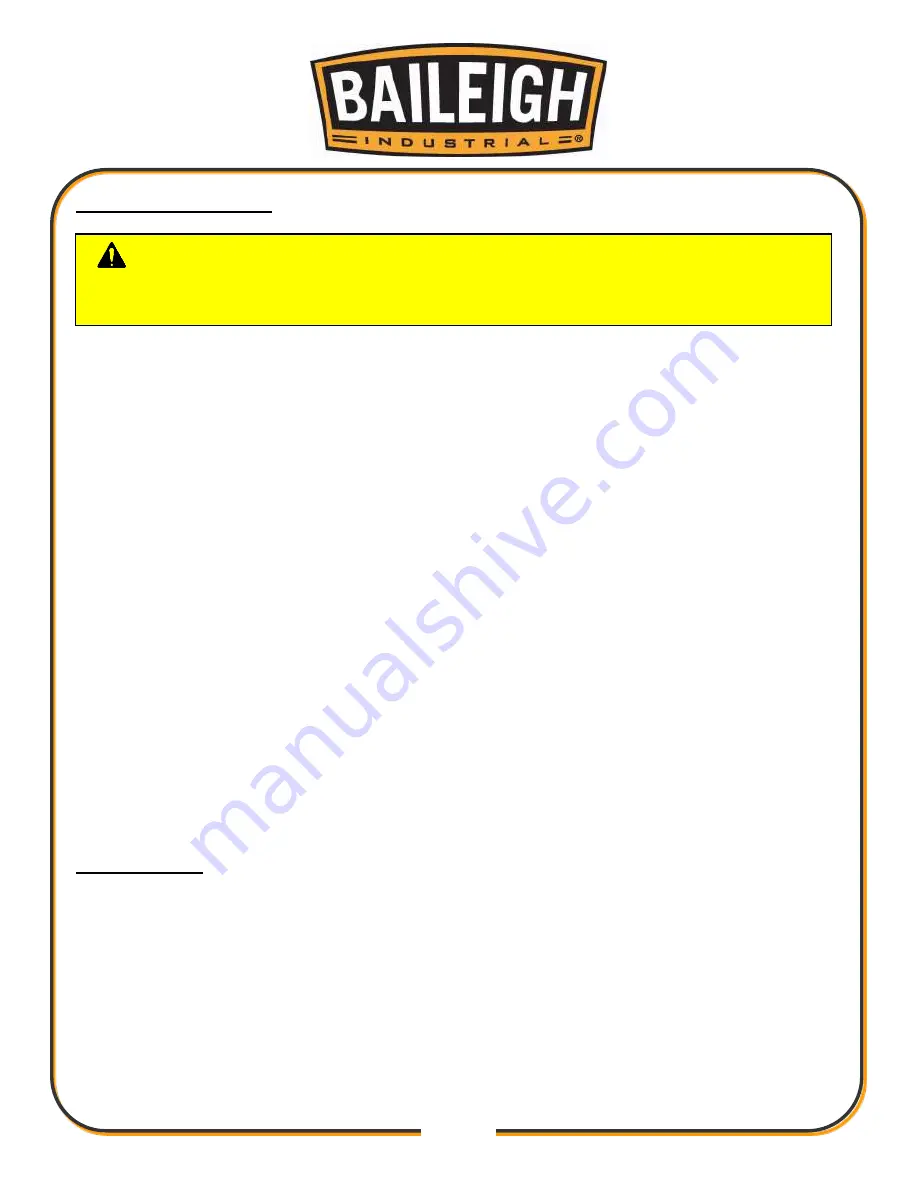
20
20
BASIC OPERATION
1. Put on safety glasses and a respirator, and secure loose clothing and long hair.
2. Unless your workpiece is very flat, surface plane the workpiece on a jointer until it is flat.
Having the face flat will ensure that it sits flat on the planer table during operation.
3. Adjust the table elevation to slightly lower than your workpiece height (approximately
1/32” –
1/16” [0.8 - 1.6mm]). cut at this depth will usually take off the high spots.
4. Start the machine by pressing the CUTTERHEAD MOTOR switch on the power/table
control.
5. Place the flat side of the workpiece down on the table, and feed the workpiece through the
planer, making sure not to stand directly in front or behind the workpiece to avoid kick-back
injury.
If the cut is too heavy and bogs down the planer:
a.
Turn the planer OFF immediately by pressing the red EMERGENCY STOP button
on the power/table control.
b.
Allow the planer to come to a complete stop.
c.
Lower the table and remove the workpiece and repeat Steps 3
–5.
6. Measure your workpiece thickness and adjust the table elevation as necessary to take a
lighter or heavier pass, depending on your needs. For most wood types,
1/8” (3.1mm) per
pass is a good cutting depth.
Operation Tips
Inspect lumber for defects, warping, cupping, twisting, and for foreign objects (nails, staples,
imbedded gravel, etc,). If you have any question about the quality of your lumber, do not use
it. Remember, wood stacked on a concrete floor can have small pieces of stone or concrete
pressed into the surface.
Use the full width of the planer. When feeding lumber into the planer, alternate between the
left, the right, and the middle. Your cutters will remain sharp much longer.
Scrape all glue from workpiece before planing.
CAUTION:
Always wear proper eye protection with side shields, face
shield, safety footwear, and leather gloves to protect from, chips, dust, burrs, and
slivers.
Summary of Contents for IP-2511-HD
Page 39: ...36 36 ELECTRICAL SCHEMATIC...
Page 40: ...37 37...
Page 41: ...38 38...
Page 42: ...39 39...
Page 43: ...40 40 Electrical Cabinet Layout...
Page 44: ...41 41 CUTTERHEAD PARTS DIAGRAM...
Page 46: ...43 43 TABLE PARTS DIAGRAM...
Page 48: ...45 45 TABLE ROLLER PARTS DIAGRAM...
Page 50: ...47 47 INFEED PARTS DIAGRAM...
Page 52: ...49 49 STAND PARTS DIAGRAM...
Page 54: ...51 51 NOTES...
Page 55: ...52 52 NOTES...
















































